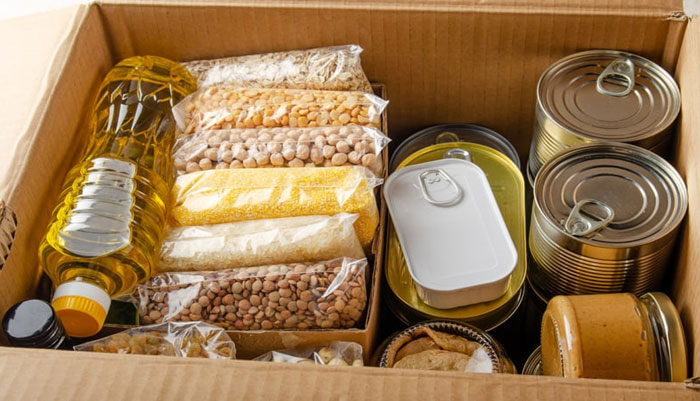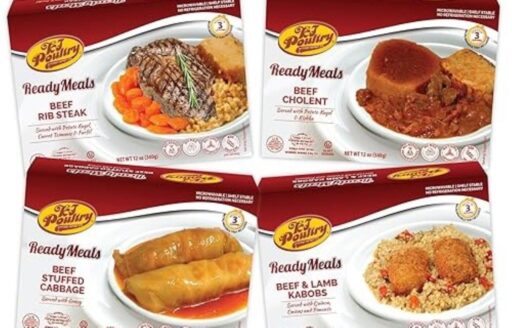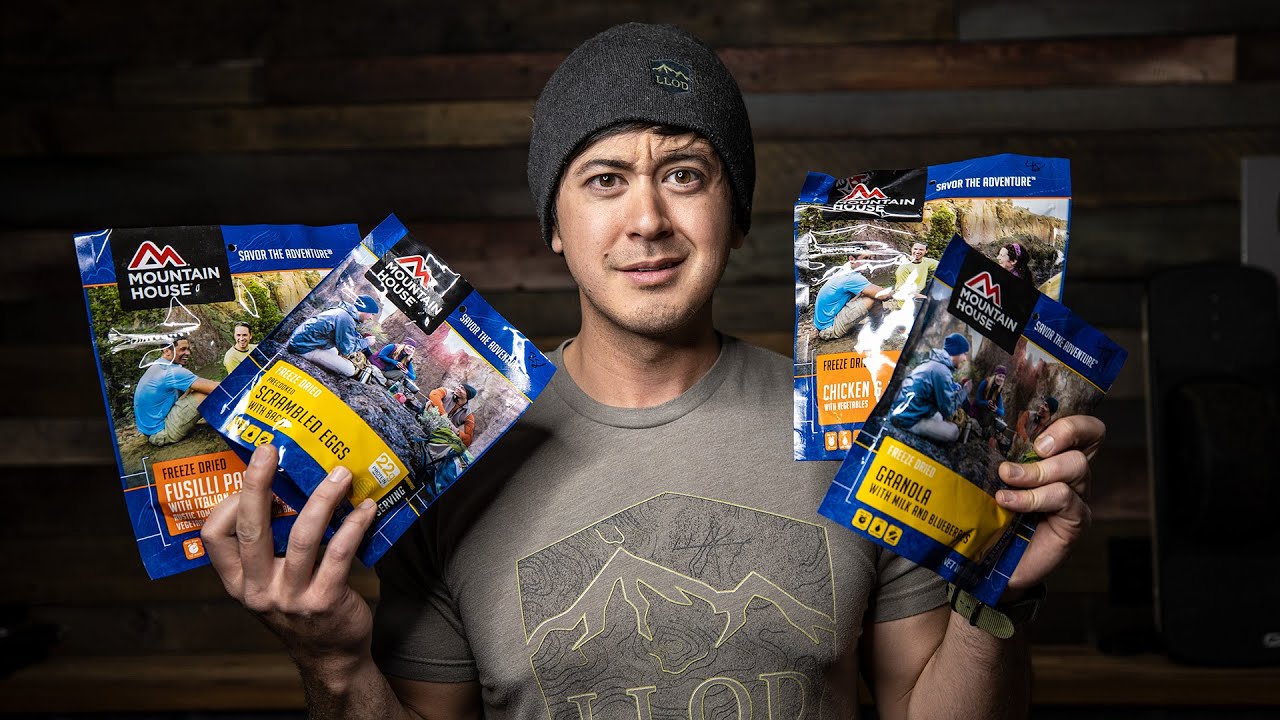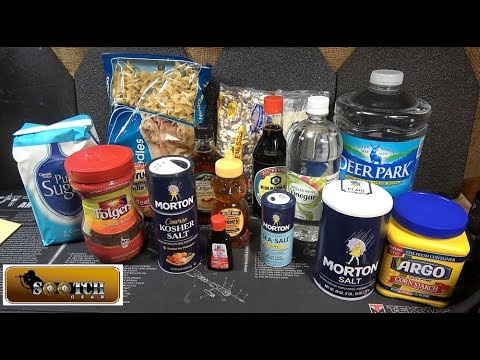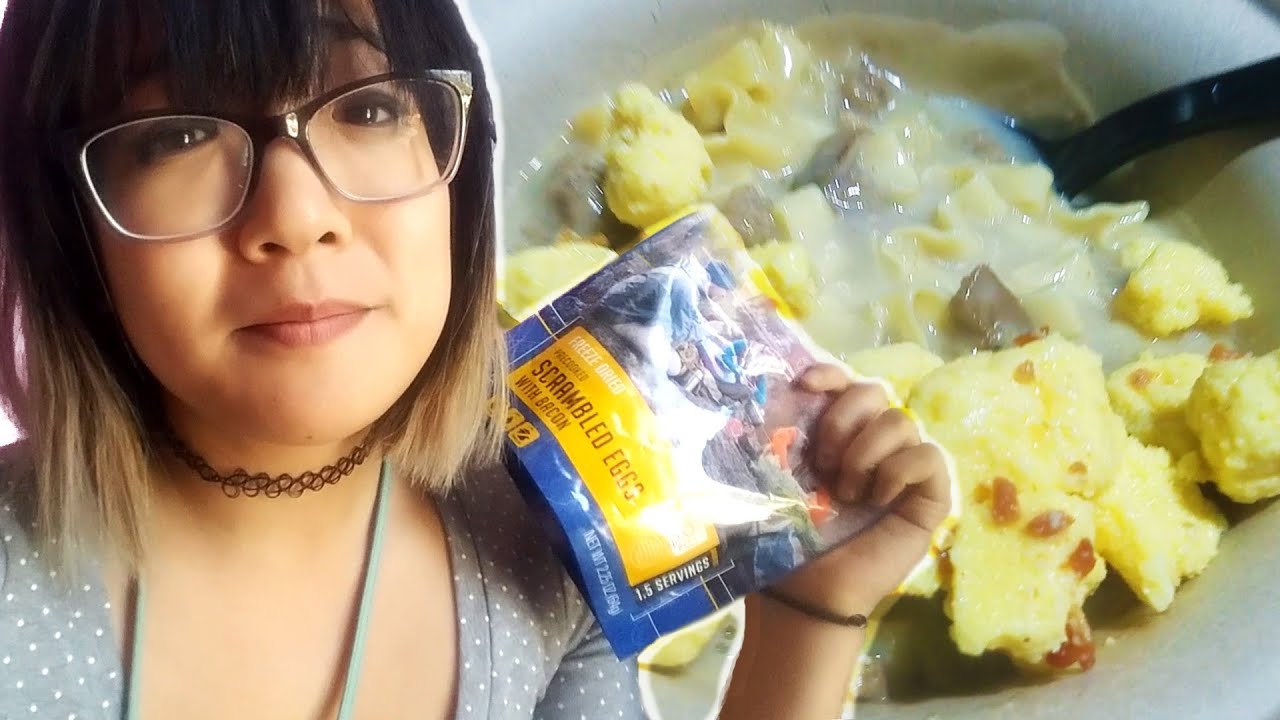In an unpredictable world, survival prepping has evolved from a fringe concept to a practical approach for many individuals and families. At its core, survival prepping involves anticipating potential disruptions – natural disasters, economic instability, or other emergencies – and preparing to be self-sufficient. Of all the preparedness categories, long-term food storage stands out as arguably the most critical. Without reliable access to food, other preparations quickly lose their meaning.
Historically, humans have practiced food preservation for millennia, from drying grains in ancient civilizations to fermenting and curing meats. These traditional methods laid the groundwork for modern techniques that allow food to remain edible and nutritious for years, even decades. The objective in survival prepping is not just to store food, but to store the right food, in the right way, to ensure it retains its caloric value, nutritional content, and palatability when needed most. This guide will walk you through the comprehensive steps to establish and maintain a robust long-term food supply.
Understanding Food Spoilage and Preservation Principles
Before delving into specific methods, it’s vital to understand what causes food to spoil and how food preservation combats these factors. The main culprits are:
- Oxygen: Causes oxidation, leading to rancidity in fats and degradation of nutrients. It also supports the growth of aerobic bacteria and molds.
- Moisture: Promotes microbial growth (bacteria, mold, yeast) and enzymatic reactions that spoil food.
- Light: Can degrade vitamins (especially B2 and C) and pigments, and contribute to rancidity in fats.
- Temperature: High temperatures accelerate chemical reactions and microbial growth. Freezing temperatures can prevent growth but may cause physical damage to some foods.
- Pests: Insects and rodents can contaminate and consume food.
Long-term food storage methods aim to mitigate these factors, creating an environment where food remains stable for extended periods.
Phase 1: Planning Your Long-Term Food Supply
Effective food storage begins with careful planning, not just impulsive buying.
- Determine Your Family’s Needs
- Caloric Intake: Estimate the daily caloric needs for each family member, considering age, activity level, and special dietary requirements. A common baseline for survival is around 2,000 calories per person per day.
- Duration: Decide on a target duration for your food supply (e.g., 3 months, 6 months, 1 year, or more).
- Dietary Restrictions/Allergies: Account for any allergies (e.g., nuts, gluten) or dietary needs (e.g., vegetarian, diabetic) within your family.
- Palatability: Store foods your family will actually eat. Stressful situations are not the time for picky eating. Test recipes and food items beforehand.
- Choose the Right Types of Food for Long-Term Storage
Focus on staple foods that are calorie-dense, nutritious, and have a naturally long shelf life.
- Grains:
- White Rice: Excellent shelf life (20-30+ years) when properly stored. Brown rice has oils and a shorter shelf life (6-12 months).
- Wheat (Hard Red Winter/White Wheat): Can last 30+ years. Can be ground into flour.
- Oats (Rolled/Steel-Cut): Good for porridge.
- Pasta: Long shelf life, versatile.
- Legumes:
- Dried Beans (Kidney, Pinto, Black, Lentils): High in protein and fiber, very long shelf life.
- Fats and Oils:
- Vegetable Shortening: Lasts longer than liquid oils (e.g., Crisco).
- Coconut Oil (refined): Good shelf life.
- Clarified Butter (Ghee): Very long shelf life at room temperature.
- Sugars and Sweeteners:
- Honey: Indefinite shelf life if pure.
- White Sugar: Indefinite shelf life.
- Salt: Indefinite shelf life, essential for health and food preservation.
- Other Essentials:
- Powdered Milk (Non-fat dry): Good source of calcium and protein.
- Dried Fruits/Vegetables: Provide vitamins and fiber.
- Canned Goods: Canned meats, fruits, vegetables offer convenience and varying shelf lives (2-5+ years).
- Freeze-Dried Meals: Offer exceptional shelf life (20-30 years), light, and easy to prepare, but often more expensive.
- Multivitamins: To supplement potential nutrient deficiencies.
- Calculate Quantities
Once you know your needs and chosen foods, calculate the quantities. For example, for a family of four aiming for a one-year supply:
- White Rice: Roughly 100-150 lbs per person per year.
- Dried Beans: Roughly 60-80 lbs per person per year.
- Adjust based on your caloric and dietary preferences. Many online calculators can help with this.
Phase 2: Choosing the Right Storage Methods and Containers
The method of storage is as crucial as the food itself.
- Optimal Storage Conditions
- Cool: Ideal temperature is 50-60°F (10-15°C). For every 10°F increase above 70°F (21°C), the shelf life of food is roughly halved. Avoid attics, garages, or areas with temperature fluctuations.
- Dark: Store in a dark place to prevent light degradation.
- Dry: Humidity should be low (below 15%). Moisture is the enemy of dry goods.
- Pest-Free: Ensure your storage area is free from rodents and insects.
- Secure: Protect from physical damage and theft if storing in an accessible area.
- Packaging for Longevity
The goal is to create an oxygen-free, moisture-free environment.
- Mylar Bags:
- Description: Thick, durable foil bags that provide an excellent barrier against oxygen, moisture, and light. They come in various sizes (quart, gallon, 5-gallon).
- How to Use: Fill the Mylar bag with dry food. Add oxygen absorbers (see below). Press out as much air as possible, then seal the bag with an impulse sealer or a clothes iron.
- Best For: Grains, beans, pasta, powdered milk, sugar, salt, oats, dried fruits/vegetables.
- Oxygen Absorbers (OAs):
- Description: Small packets containing iron powder that react with oxygen, effectively removing it from a sealed container. They are crucial for preserving food quality and preventing insect infestations.
- Sizing: Choose the correct size (e.g., 100cc for quart, 300cc for gallon, 2000cc for 5-gallon bucket).
- Use Promptly: Once opened, OAs start absorbing oxygen. Use them quickly and reseal any unused ones immediately in an airtight jar.
- Food-Grade Buckets (5-Gallon):
- Description: Heavy-duty plastic buckets, typically with gamma lids or rubber gasket lids, that provide a secondary layer of protection and make storage stackable and pest-proof.
- How to Use: Place sealed Mylar bags inside these buckets.
- Best For: Housing sealed Mylar bags to protect them from rodents, physical damage, and light.
- Vacuum Sealing (with specific foods):
- Description: Removes air from a bag or container.
- Best For: Dehydrated foods (e.g., jerky, dried fruit slices), some grains, and freeze-dried meals if not already in long-term packaging. Not ideal for delicate items that can be crushed or foods that contain residual moisture.
- Caution: Vacuum sealing alone is generally not sufficient for very long-term storage of oxygen-sensitive foods like grains, as plastic bags are permeable to oxygen over time. Always combine with OAs for best results.
- Canning (Pressure Canning/Water Bath Canning):
- Description: A method of preserving food in airtight jars by heating them to kill microorganisms. Pressure canning is essential for low-acid foods (vegetables, meats); water bath canning for high-acid foods (fruits, pickles).
- Best For: Meats, vegetables, fruits, jams, sauces.
- Shelf Life: Properly canned goods can last 2-5 years, sometimes longer, but quality may degrade.
- Requires Skill: Proper technique is crucial for safety to prevent botulism.
Phase 3: Implementing and Maintaining Your Food Storage
Building your food supply is an ongoing process, not a one-time task.
- “First In, First Out” (FIFO) System
- Rotation: Implement a FIFO system. When you buy new food, place it behind older stock. Use older items first to prevent spoilage and ensure a constant rotation.
- Everyday Use: Incorporate your stored foods into your daily meals. This allows you to cycle through your inventory, identify what works, and ensures you’re familiar with cooking methods for these staples.
- Labeling and Inventory
- Clear Labels: Label all containers clearly with:
- Contents (e.g., “White Rice”)
- Packaging Date
- “Best By” or “Use By” Date
- Quantity
- Inventory List: Keep a detailed inventory list, either digitally or on paper, showing what you have, where it’s stored, and its expiration date. This helps you manage your stock and plan for resupply.
- Security and Accessibility
- Location: Choose a storage location that is secure from pests, moisture, and extreme temperatures. Basements, cool closets, or dedicated pantries are often ideal.
- Accessibility: Ensure your food is accessible if an emergency strikes. Avoid storing it in an area that might become blocked or inaccessible.
Considerations Beyond Basic Food Storage
- Water Storage: Food storage is meaningless without a plan for water storage and purification. Store at least 1 gallon of water per person per day for drinking and sanitation, for a minimum of 3 days, ideally longer.
- Cooking Methods: Consider how you will cook the food if power is out. Include alternative cooking methods like propane stoves, rocket stoves, solar ovens, or even a simple campfire setup.
- Nutrition and Variety: While staples are crucial, aim for some variety to ensure a broader spectrum of nutrients and to prevent palate fatigue. Include dried spices, powdered drinks, and comfort foods.
- Specialty Foods: For short-term (e.g., 72-hour) kits, pre-packaged emergency ration bars or military-style MREs (Meals, Ready-to-Eat) can be useful for their portability and no-cook convenience.
- Gardening/Foraging: For ultimate long-term survival, consider developing skills in gardening and foraging, which can supplement or even replenish your stored food.
Conclusion
Long-term food storage is a cornerstone of survival prepping, offering peace of mind and resilience in uncertain times. By meticulously planning your needs, selecting appropriate foods, employing effective packaging techniques, and maintaining a disciplined rotation system, you can build a sustainable food supply that provides security for years to come. This proactive approach to food preservation is not just about hoarding; it’s about responsible preparedness, ensuring your family’s basic needs are met, come what may.
FAQ
Q1: What are the absolute best foods for long-term storage?
The absolute best foods for long-term storage are white rice, dried beans, and hard wheat berries. When properly stored in Mylar bags with oxygen absorbers inside food-grade buckets, they can last for 20-30 years or even longer while retaining significant nutritional value. Honey and salt also have indefinite shelf lives.
Q2: How long can canned goods last for survival prepping?
Commercially canned goods typically have a “Best By” date of 2-5 years. However, if stored properly in a cool, dark place, they can remain safe to eat for many years beyond that date, though their quality (taste, texture, nutritional content) may degrade over time. Home-canned goods have a shorter, less predictable shelf life and require strict adherence to safety guidelines.
Q3: Can I store brown rice long term?
No, brown rice is generally not recommended for very long-term storage (beyond 6-12 months). It contains natural oils that will eventually go rancid, leading to an unpleasant taste and smell. Stick to white rice for decades-long storage.
Q4: Do oxygen absorbers expire or lose their effectiveness?
Oxygen absorbers do not expire in the traditional sense, but they lose their effectiveness once exposed to air and absorb oxygen. It’s crucial to use them quickly after opening their sealed packaging. Any unused OAs should be immediately placed in an airtight glass jar or vacuum-sealed bag to preserve their efficacy for future use.
Q5: What is a gamma lid for a food-grade bucket, and why is it useful?
A gamma lid is a specialized two-piece lid for 5-gallon food-grade buckets. It consists of a ring that seals onto the bucket and a screw-on lid. This design allows for airtight sealing and easy re-opening without needing a lid wrench. It’s highly useful for long-term food storage as it provides robust protection against moisture and pests while making it convenient to access food if you need to rotate your stock.
Q6: Is it safe to store food in plastic bags like zip-top bags for long term?
No, standard plastic zip-top bags are not suitable for long-term food storage. They are permeable to oxygen and moisture over time, which will lead to spoilage. For dry goods, you need Mylar bags (which provide a much stronger barrier) combined with oxygen absorbers for true long-term preservation.
Q7: How much water should I store for survival prepping?
A general guideline is to store at least 1 gallon of water per person per day for drinking and basic hygiene. For long-term survival prepping, aim for a minimum of a 2-week supply, but ideally much more (e.g., several months) if space allows. Don’t forget water purification methods as well.

